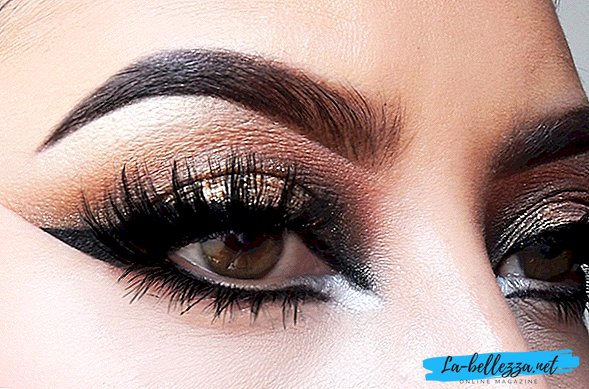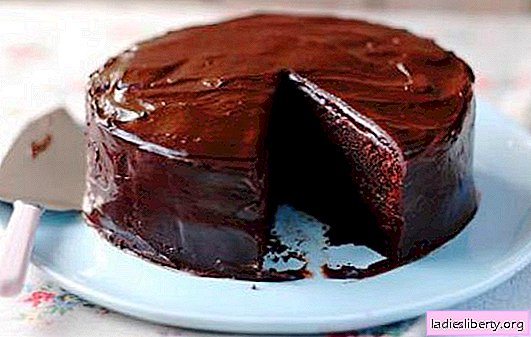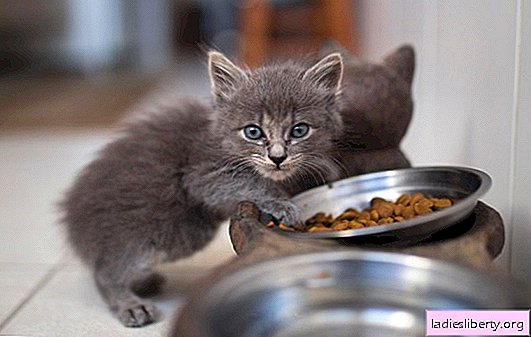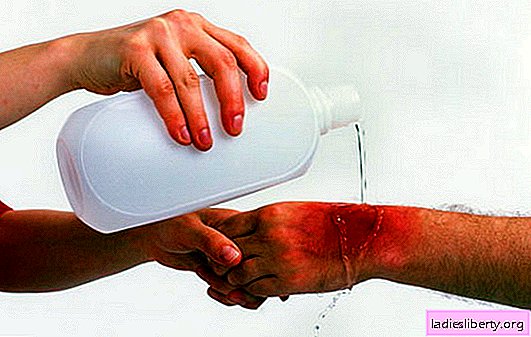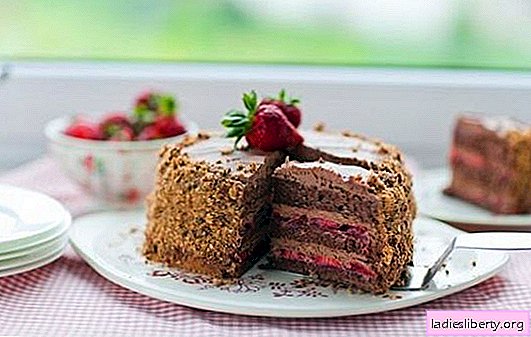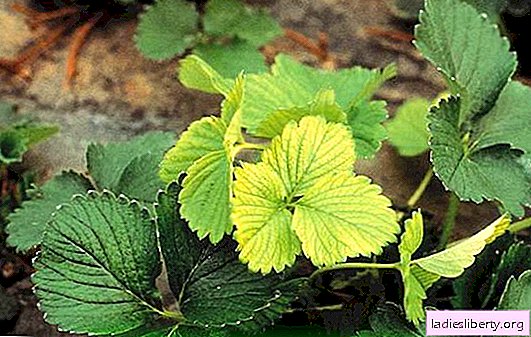
In almost any suburban area - even in the northern regions - you can find strawberry bushes. The efforts spent on care are more than paid for by the unique sweet taste of homemade berries. Moreover, plantation should be transplanted only once every 4 years. On the one hand, it is very convenient, but on the other hand, a plantation accumulates diseases that damage the crop.
Possible causes of yellow leaves in strawberries
There are plenty of reasons why strawberry leaves turn yellow. This can be affected by diseases accumulated over the years, a lack of vitamins and minerals, improper care and watering, improper arrangement of beds and much more. And, most importantly, such a problem is encountered not only by beginners in strawberry cultivation, but also experienced gardeners.
Therefore, first of all, it is necessary to determine the source of the problem of why the leaves turn yellow in strawberries and begin immediate work to restore the damage caused to the plant.

Incorrect planting of strawberry beds
As one of the common options, the incorrect arrangement of the beds also affects the further fate of the grassy family. In order to prevent further errors during planting, you should identify the key errors that gardeners make:
1. The location of the beds in a too open place is unacceptable, especially if most of the daytime the beds are in direct sunlight. In order not to burn the seedlings, it is necessary to cover it for the period of the greatest solar activity. As a covering material, a non-woven fabric or a plastic film can be used.
2. The ideal time for planting strawberries in almost all varieties is closer to the end of July. Thus, strawberries will take root in the months allotted to the cold, its roots will grow stronger and will be able to calmly survive the frost.
3. The surrounding location of other cultivated plants. For example, the proximity of raspberries and tulips to strawberries increases the likelihood of their common pest - raspberry-strawberry weevil.
4. Strawberry bushes give a poor harvest or do not take root in acidic and salty soil.
5. Strawberries should not be transplanted onto the soil where families of nightshade and asteraceae were located before it. But the soil after cereals, radishes, garlic and parsley is ideal for a new arrangement of strawberry beds.
6. Too close the location of strawberry bushes has a negative consequence - the roots need freedom and nutrition. In order for the plantation to bring maximum yield, it is necessary to plant bushes at an equidistant distance.

Strawberry leaves turn yellow: lack of watering and top dressing
Nutritional deficiency
Another reason why strawberry leaves turned yellow may be a lack of vitamins and beneficial elements. Magnesium hunger is the most common cause of yellowing of leaves. Magnesium is a part of chlorophyll and takes part in plant photosynthesis. Its deficiency is primarily manifested in strawberry bushes on acidic soils (soils not rich in humus). With magnesium starvation, the leaves of plants between the veins acquire a characteristic brown, yellow or purple color. Strawberry leaves are gradually stained, indicating that the plant cells are gradually dying. This is typical for strawberry bushes, whose seedlings have been in a certain place for several years. In order to prevent extinction, you must do the following:
• Magnesium Sulfate. It is added to the soil in the form of a diluted solution or served in dry form under loosening. For a complete disposal of strawberry bushes from magnesium starvation, a weekly repeat of the procedure will be required.
Nitrogen hunger - no less common reason. Symptoms are the same - yellowed leaves up to a lemon color. There is a solution - ammonium nitrate or nitrogen top dressing. In addition to the high nitrogen content, nitrate contains ammonia, which in the spring period repels insect pests, as well as May beetles.
Non-infectious chlorosis occurs in the spring, when the earth has time to warm up with the sun's rays much slower than air. Leaves begin to turn yellow, lose their color to pale yellow. This is due to the fact that the roots still in the unheated ground are not able to work at full strength, therefore, the supply of moisture and nutrients is slowed down. In order not to lose seedlings, it is recommended to water strawberry bushes with warm water and spray with solutions containing iron.
Xanthosis - No less common disease and most often occurs in the warmer times of the year. The disease is not transferred from diseased plants to healthy ones not with the help of juice or seeds. Infection is spread in two ways:
1. Pentatrichopus fraguefolii Cock. In other words, aphids.
2. Planting material in which seedlings were located before planting in the soil.
The most susceptible to this disease varieties of strawberries: Marshall, Beauty Zagoria, Royal Soverein, Roshchinskaya.
In order to avoid infection of the plantation, it is necessary to destroy the insect eggs in the soil in early spring. To do this, you can use 1.5% nitrafen, which is sprayed on the leaves and under the root of the strawberry bush. Systematic spraying stops one month before harvesting.
Lack of watering
Lack of watering has a negative effect on the healthy growth of strawberries. Like any plant, strawberries need watering, because together with water, the roots get the necessary vitamins and minerals. In order for the frequency of watering needed seedlings, it is necessary to build on the region.
Strawberry plantations in the southern regions require more frequent watering than in the northern ones. The main thing to remember is the rule: do not pour strawberries. Excess water will not allow the plant to grow and bear fruit faster, it will only increase the likelihood of infection by various diseases transmitted through the soil.
Strawberry leaves turn yellow: strawberry pests
If there is no answer to the question why strawberry leaves turn yellow, you should delve into the "root" of the problem. Or rather, look under the sheet. Unfortunately, with the onset of the warm season, plant pests also wake up - insects that not only kill by eating roots, stems and leaves, but also transfer the infection to healthy bushes.

The location of strawberry seedlings near raspberry bushes increases the likelihood of a common enemy appearing - raspberry and strawberry weevil. This beetle, no longer than 5 mm long, as soon as buds appear on the strawberry bush, lays its larvae in them. The larva eats the bud from the inside, and then leaves into the soil to pupate. In order to avoid this problem, the following is necessary:
Spray with Fitoverm solution or other analogs 3 times: until strawberries have buds, after raspberry bushes have begun to appear and again several days later.
Penny slobber - the fight against this strawberry-strawberry pest of gardeners is the same - a hot shower with a solution of potassium permanganate will wash off the pest and beat off any desire to settle on a strawberry plantation.
Fight against spider mites, which is located under the leaf, is similar - hot water with diluted potassium permanganate. Because if this is not done, the tick will suck out the juice from the leaves, which will lead to yellowing, coagulation and complete death of the latter.
What to do if no reasons have been identified why strawberry leaves turn yellow?
For no reason, strawberry bushes, like any other plant, will not become yellowish and fade.
All that is necessary for the healthy growth of strawberries, ensuring proper care.
To combat not only pests, but also with a lack of useful elements in the soil, fertilizing based on whey, iodine or potassium permanganate will help.
A solution based on potassium permanganate completely fights a large number of pests not only on the surface of the leaf, but also in the soil, saturates the soil with useful elements and provides the gardener with a good harvest.
Compliance with planting rules, watering time, timely feeding and ensuring sufficient light supply will ensure the plantation a healthy crop.

